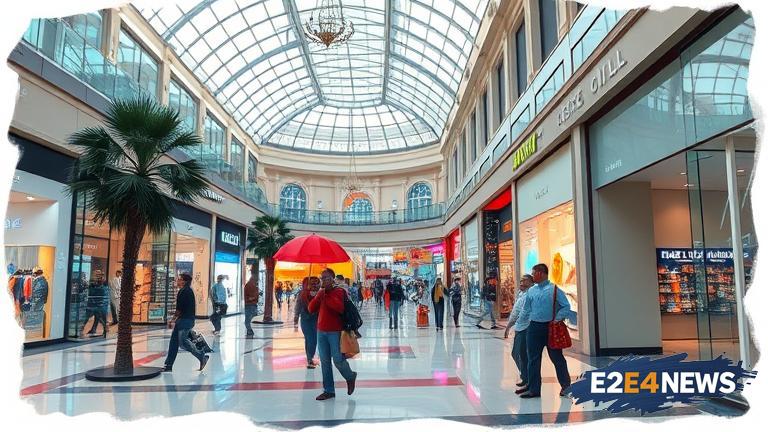The Indian retail market has witnessed a notable shift in the second quarter of 2025, with mall leases experiencing a significant surge. This increase can be attributed to various factors, including the growing demand for experiential retail and the convenience offered by malls. On the other hand, high street demand has declined by 26% during the same period, indicating a change in consumer preferences. The decline in high street demand can be linked to the rising costs of operating standalone stores, as well as the limited parking and accessibility issues often associated with high street locations. In contrast, malls offer a more comprehensive shopping experience, with a wide range of brands, dining options, and entertainment facilities under one roof. The surge in mall leases is also driven by the increasing popularity of omnichannel retail, which enables brands to integrate their online and offline presence seamlessly. Furthermore, malls provide a more secure and controlled environment, which is a major draw for retailers and consumers alike. The Indian government’s efforts to boost the retail sector, including the introduction of policies aimed at simplifying the process of setting up and operating retail businesses, have also contributed to the growth of mall leases. Additionally, the rise of e-commerce in India has led to an increase in demand for logistics and warehousing facilities, which are often located within or near malls. The growth of the Indian middle class, with its increasing disposable income and changing lifestyle preferences, is another key factor driving the demand for mall space. As a result, mall developers are now focusing on creating more experiential and engaging retail environments, with a mix of retail, entertainment, and dining options. The surge in mall leases is expected to continue in the coming quarters, driven by the ongoing demand for retail space and the limited supply of high-quality mall space in key locations. However, the decline in high street demand is likely to persist, as retailers increasingly opt for mall locations over standalone stores. The shift towards mall-based retail is also expected to drive the growth of the Indian retail market, with malls accounting for an increasingly larger share of total retail sales. In terms of location, the surge in mall leases is most pronounced in major cities such as Delhi, Mumbai, and Bengaluru, where consumer spending power is highest. The growth of mall leases is also driven by the increasing demand for luxury retail space, with high-end brands seeking to establish a presence in key locations. Moreover, the rise of food and beverage (F&B) retail in India has led to an increase in demand for F&B space in malls, with many malls now allocating a significant portion of their space to dining and entertainment options. The surge in mall leases is expected to have a positive impact on the Indian economy, with the retail sector contributing significantly to the country’s GDP. However, the decline in high street demand is likely to have a negative impact on small, independent retailers, who may struggle to compete with larger, more established brands. Overall, the shift towards mall-based retail in India is expected to continue, driven by changing consumer preferences and the growing demand for experiential retail. As the Indian retail market continues to evolve, it is likely that malls will play an increasingly important role in shaping the country’s retail landscape. The growth of mall leases is a testament to the resilience and adaptability of the Indian retail sector, which has been able to navigate the challenges posed by the COVID-19 pandemic and other external factors. In conclusion, the surge in mall leases in India is a significant trend that is expected to continue in the coming quarters, driven by the ongoing demand for retail space and the limited supply of high-quality mall space in key locations.
